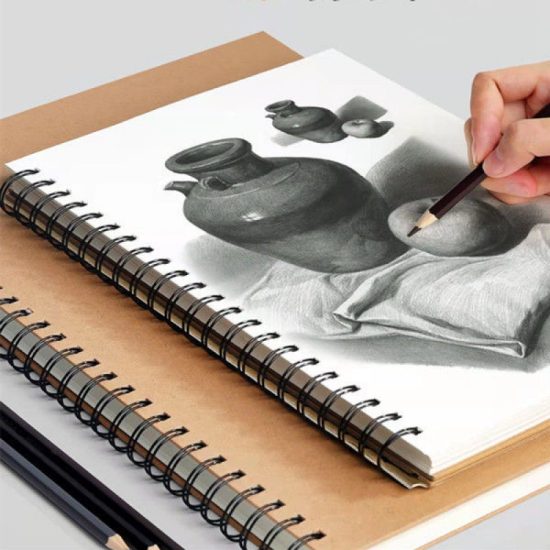Sketching is a versatile and expressive art form that allows you to capture your ideas and observations quickly. Here are some techniques for effective sketching in your sketchbook:
- Gesture drawing: Gesture drawing involves capturing the essence of a subject’s movement or form with quick, loose lines. It’s a useful technique for capturing the energy and dynamics of a subject. Practice gesture drawing by observing and sketching the basic shapes and gestures of people, animals, or objects in a short amount of time.
- Proportions and basic shapes: Pay attention to the proportions and basic shapes of your subjects. Start by lightly sketching simple geometric shapes to establish the overall structure and then refine the details. Breaking down complex forms into simpler shapes helps you achieve accuracy and maintain proper proportions.
- Quick studies and thumbnails: Use quick studies and thumbnail sketches to explore different compositions and ideas. These small, preliminary sketches help you plan out your artwork before committing to a more detailed drawing. Experiment with different arrangements, perspectives, and focal points to find the most compelling composition.
- Line weight and hatching: Vary your line weight to create depth and dimension in your sketches. Use thicker lines for areas of shadow or areas closer to the viewer, and thinner lines for lighter or distant elements. Hatching, which involves drawing parallel lines, can be used to add shading and texture to your sketches.
- Value and shading: Practice shading techniques to create realistic three-dimensional forms in your sketches. Observe the light source and how it affects the subject, then use techniques like cross-hatching, stippling, or blending to depict values and create depth. Shading adds volume, dimension, and a sense of realism to your drawings.
- Negative space observation: Pay attention to the negative space around your subjects. Negative space refers to the areas surrounding the main subject. By focusing on the shapes and values of the negative space, you can create more accurate and well-proportioned drawings.
- Perspective drawing: Understanding perspective is crucial for creating convincing and realistic sketches. Learn the principles of linear perspective, such as vanishing points, horizon lines, and convergence. This knowledge allows you to accurately depict depth and spatial relationships in your sketches.
- Experiment with different mediums: Explore various drawing materials and mediums to discover which ones you enjoy working with the most. Experiment with pencils, pens, markers, charcoal, or even digital tools. Each medium offers unique effects and textures, allowing you to create different styles and moods in your sketches.
- Continuous line drawing: Challenge yourself with continuous line drawing, where you draw without lifting your pen or pencil from the paper. This technique encourages you to observe carefully and trains your hand-eye coordination. Continuous line drawing can result in dynamic and expressive sketches.
- Regular practice and observation: Practice regularly and observe your surroundings keenly. Set aside dedicated time for sketching, even if it’s just a few minutes a day. Carry your sketchbook with you wherever you go and take advantage of opportunities to observe and sketch from life. The more you practice and observe, the more your sketching skills will improve.
Remember, sketching is a personal and exploratory process. Enjoy the journey of discovering your own style and techniques that work best for you. Be open to experimentation, embrace imperfections, and let your sketchbook be a space for creative expression and growth.


